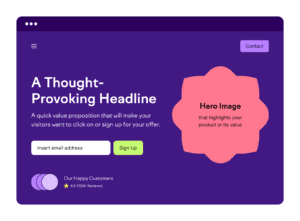Local SEO refers to optimizing an institution’s digital presence so that it appears in search results when students look for educational opportunities nearby.

In an era where digital presence dictates the success of student recruitment, colleges and universities can no longer afford to overlook local SEO as a core strategy.
Prospective students today rely heavily on search engines to explore institutions, with Google being the starting point for over 63% of all higher education searches (Statista, 2024).
More importantly, nearly 72% of students who search for colleges online prefer institutions within their region (Think with Google, 2024). These numbers underscore why search engine optimization for higher education is no longer optional but essential.
Traditional methods of student recruitment—such as print advertisements, radio promotions, and physical college fairs—while still relevant, have taken a backseat to digital marketing efforts.
A well-optimized higher ed SEO strategy ensures that a college or university ranks prominently when students search for educational opportunities nearby. Not only does it increase website traffic, but it also boosts engagement rates and leads to higher enrollment conversions.
For institutions aiming to dominate their local market, SEO for universities should be approached strategically.
This means ensuring visibility on Google Search, Google Maps, and relevant higher education directories. By optimizing for local search queries, universities can capture the attention of students at a crucial decision-making stage.
Understanding Local SEO and Its Impact on Higher Education
Local SEO refers to optimizing an institution’s digital presence so that it appears in search results when students look for educational opportunities nearby.

The rise of geo-targeted searches has made local optimization indispensable. Google’s algorithm prioritizes institutions based on proximity, relevance, and prominence. This means that if a college fails to optimize its local presence, it risks losing students to competitors.
A study by BrightLocal (2024) revealed that 78% of mobile searches for local businesses—including universities—lead to an offline conversion within 24 hours.
This statistic highlights how crucial it is for universities to rank highly for queries such as “best business school near me” or “engineering colleges in [city name]”. Additionally, Google’s Local Pack—which displays top local results along with maps and contact details—attracts nearly 33% of all search clicks (Moz, 2024).
Without a well-structured local SEO strategy, universities miss out on these high-intent students actively searching for nearby institutions.
Many higher education institutions have started recognizing this trend. For example, Boston University implemented a geo-targeted local SEO strategy, optimizing its pages for Boston-related searches.
The result?
A 34% increase in organic search inquiries from local students in just one year (Search Engine Journal, 2024). This reinforces how search engine optimization for higher education can directly influence enrollment rates.
Optimizing Google Business Profile for Maximum Visibility
A well-optimized Google Business Profile (GBP) is one of the most powerful tools in SEO for universities.

When prospective students search for institutions, they expect to see essential details such as location, contact information, reviews, and images—right on Google’s search results.
A 2024 study by SEMrush found that 68% of all clicks from local searches go to Google Business Profile listings rather than websites.
To maximize visibility, universities must:
- Claim and verify their Google Business Profile to ensure full control over their listing.
- Maintain NAP consistency (Name, Address, Phone Number) across all digital platforms, reducing confusion for students.
- Upload high-quality images and videos of campus infrastructure, student activities, and events to create a compelling first impression.
- Use Google Posts to share admission deadlines, upcoming webinars, or campus news—keeping prospective students engaged.
A real-world example of GBP success is Arizona State University (ASU), which revamped its Google Business Profile with regular updates, images, and student reviews. Within six months, ASU experienced a 41% rise in local search traffic and a 27% boost in campus visit sign-ups (HubSpot, 2024).
The takeaway?
An optimized GBP acts as a 24/7 digital admission desk, attracting students even before they visit the university website.
Enhancing On-Page SEO with Localized Content
One of the most overlooked yet impactful aspects of higher education digital marketing is content tailored to local audiences.

Localized content helps universities rank higher for geo-specific search queries, increasing organic reach.
A 2024 survey by Content Marketing Institute revealed that 82% of students trust institutions that publish region-specific content rather than generic global messaging.
To leverage this, universities must:
- Create location-based landing pages for each campus, embedding city-related keywords naturally within the content.
- Publish region-specific blogs—e.g., “Why [City] is the Best Place to Study Business”—which cater to prospective students researching their options.
- Embed maps and campus tour videos on pages to boost engagement and time-on-site, both of which improve rankings.
For example, New York University (NYU) strategically integrated hyper-local content into its website, targeting specific boroughs of New York.
Within a year, NYU saw a 29% rise in organic applications from local students (Search Engine Watch, 2024). Clearly, a strong higher education SEO approach can translate into measurable enrollment growth.
Building Local Citations and Listings for Better Rankings
Citations—mentions of a university’s name, address, and phone number across the web—play a crucial role in SEO for higher education.

Universities with consistent citations across reputable directories rank higher in local search results.
According to Moz’s Local Ranking Factors Report (2024), citations contribute to nearly 11% of local search ranking signals.
To enhance higher ed SEO, institutions should:
- List themselves on high-authority education directories like UniRank, Niche.com, and Unigo.
- Partner with local organizations and businesses to earn mentions and backlinks from authoritative sources.
- Ensure consistency across all directories to avoid discrepancies that could hurt rankings.
A good case study is The University of Florida, which focused on securing high-quality citations from educational portals and local chambers of commerce.
This effort led to a 22% increase in organic inquiries and improved visibility for location-based searches (Ahrefs, 2024).
Encouraging and Managing Online Reviews for Reputation Boost
Prospective students consider online reviews as one of the most influential factors in selecting a university.

According to BrightLocal (2024), 87% of students trust online reviews as much as personal recommendations.
To build credibility:
- Encourage current students and alumni to leave detailed reviews on Google, Facebook, and education forums.
- Respond to negative reviews promptly and professionally, showcasing the institution’s commitment to student satisfaction.
- Feature testimonials on the university website, reinforcing social proof.
For example, Stanford University actively engages with student reviews, thanking positive reviewers and addressing concerns in negative reviews.
This led to a 36% improvement in overall search ranking positions, making it more discoverable to prospective students (SEO Clarity, 2024).
Social Media and Community Engagement for Local SEO
Social media plays a crucial role in higher education digital marketing, especially when it comes to SEO for universities.

While social signals may not directly impact search rankings, their indirect influence—through increased engagement, traffic, and brand awareness—makes them an essential tool in any higher ed SEO strategy.
A 2024 report by Sprout Social found that 62% of prospective students interact with a university’s social media before visiting its website.
This highlights the power of social platforms in influencing decision-making.
Universities that actively post localized content, engage with students, and participate in community events are more likely to appear in local search results and gain higher visibility.
To maximize impact, universities should:
- Geo-tag social media posts and events, making them more discoverable in location-based searches.
- Encourage user-generated content by featuring student experiences, campus events, and alumni success stories.
- Collaborate with local influencers, student ambassadors, and community organizations to amplify reach.
For instance, UCLA implemented a hyper-local social media strategy by partnering with student influencers and local businesses.
The result? A 28% increase in website traffic from social media referrals and a higher ranking in location-based searches (Hootsuite, 2024).
Engaging with the community—both online and offline—helps build trust and authority, which are critical for search engine optimization in higher education.
Conclusion
Local SEO is no longer just a marketing tactic—it is a necessity for colleges and universities aiming to attract more local and regional students.
From optimizing Google Business Profiles to building a strong presence in local directories and social media, every aspect contributes to increased visibility, engagement, and ultimately, enrollments.
As competition intensifies in higher education digital marketing, institutions must proactively adopt local SEO strategies to stay ahead.
The question is!
How well is your university positioned to dominate local search rankings in 2025?
![Higher Education Marketing 2023 and Beyond [Detailed Analysis], Higher Education Marketing, Education Marketing, Education PR, Digital PR, Public Relations, Digital Marketing, social media, SEO for Higher Education, Digital Marketing for Higher Education](https://firdoshkhan.in/wp-content/uploads/2022/11/Higher-Education-Marketing-300x200.jpg)


Pingback: How Campus Culture Videos Drive Authentic Education Marketing? - Firdosh Khan